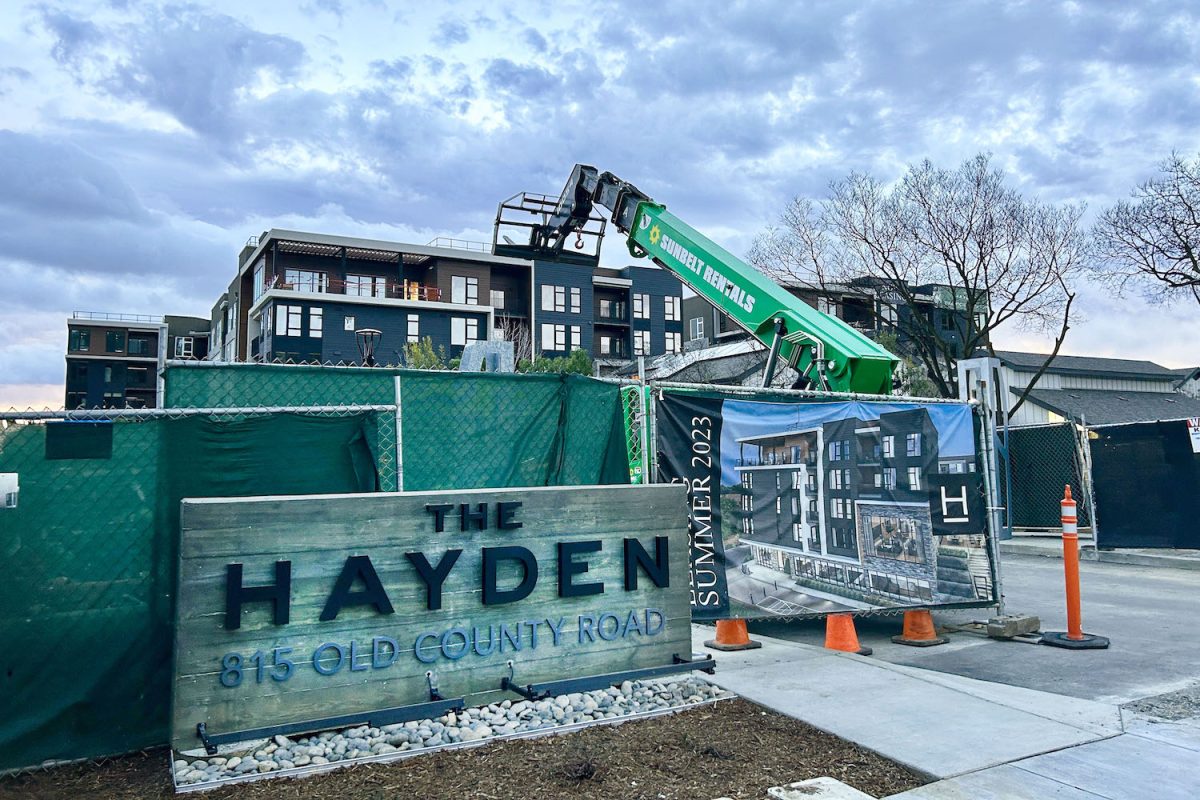Multiple new housing development proposals on properties east of El Camino Real have been completed or are under review by the City of Belmont, causing numerous concerns, particularly from residents of the Sterling Downs and Homeview neighborhoods.
One of these developments is proposed at 580 Masonic Way, which is currently a strip mall known as the Belmont Town Center.
Joanne Adamkewicz is a resident of Sterling Downs and an organizer for Save East Belmont. Neighbors formed the group to take action on their shared concerns about issues such as housing equity that are impacting their community.
“We are going to lose five successful local businesses which were there for a long time. Two restaurants, a dry cleaner, a nail salon, and the beloved Challenge School are all going to close, or at least move if they can find new locations,” Adamkewicz said.
Additionally, the proposed development has brought new concerns for pedestrian safety, especially with Nesbit School being in close proximity to the large development.
“Many young children walk or bike to school with or without a parent,” Adamkewicz said. “Having a busy parking garage driveway there, such that exiting cars will be crossing the sidewalk during morning rush hour when kids are walking past, is a real safety hazard.”
California Senate Bill 35 was signed into law in 2017 to accelerate housing development in response to the state’s affordable housing crisis. By law, all cities are required to create an eight-year housing element plan based on a Regional Housing Needs Allocation (RHNA) goal that originates from the state and assesses affordability levels within each city.
Belmont’s RHNA goal rose from 485 housing units for the 2015-2023 Housing Element to 1785 housing units for the 2023-2031 Housing Element.
“The city doesn’t build the housing, but we have to designate appropriate housing opportunity sites and create a zoning framework and streamlined processes to facilitate housing to be built,” said Carlos de Melo, the Community Development Director for Belmont.
Currently, most of the new major developments are located in District One of Belmont, resulting in concerns such as future traffic congestion and parking in local neighborhoods.
“It’s unfair to put the full burden of meeting Belmont’s housing requirements on just one District, and such lopsided growth is also bad for infrastructure like sewers and roads, it’s bad for traffic, it’s bad for schools and it’s bad for parks,” Adamkewicz said.
There is a reason that District One is particularly desirable to developers.
“When you go west in Belmont, you get further away from the El Camino Real/Caltrain Transit Corridor and some of its adjacent under-utilized commercial areas. In west Belmont, there has been less available land that can be sold and redeveloped for housing,” de Melo said.
Another housing development proposed for District One is at 678 Ralston Ave., an eight-story affordable housing complex that would replace a local dry cleaning business. Neighborhood residents have expressed concern regarding the height of the building and the minimal parking included in the development.
“The city is trying to do its best to listen to all perspectives, assess concerns, and create solutions to issues but there is also state legislation that the city has to adhere to,” de Melo said.
The state density bonus law allows developers to propose buildings with affordable housing beyond city standards and requirements. It authorizes heights of three stories higher than city standards for projects within a half mile of a major transit stop, in this case, the nearby Belmont Caltrain station.
Kathy Kleinbaum is the Assistant City Manager of Belmont, who helps oversee the Community Development department.
“I know that people are more concerned about this project because its height is very different from what’s currently surrounding it. And, the only access to the project is on Ralston Avenue, which is one of our most congested thoroughfares,” Kleinbaum said.
“Being close to the transit corridor and creating all affordable housing means you can propose and potentially build projects that are taller and more intense than what the city has typically allowed,” de Melo said.
While there is disagreement on the size and location of these developments coming to District One, residents and city staff all agree that adding more affordable housing is needed in the community.
“It will add much-needed affordable housing, something that we’re very supportive of in our community. We do see the need for this, and these projects will provide that really critical resource,” Kleinbaum said.






















